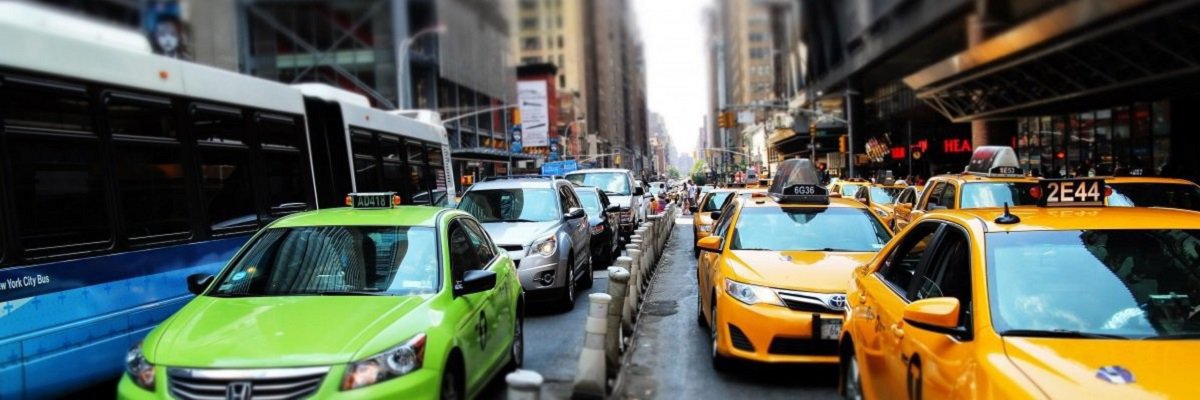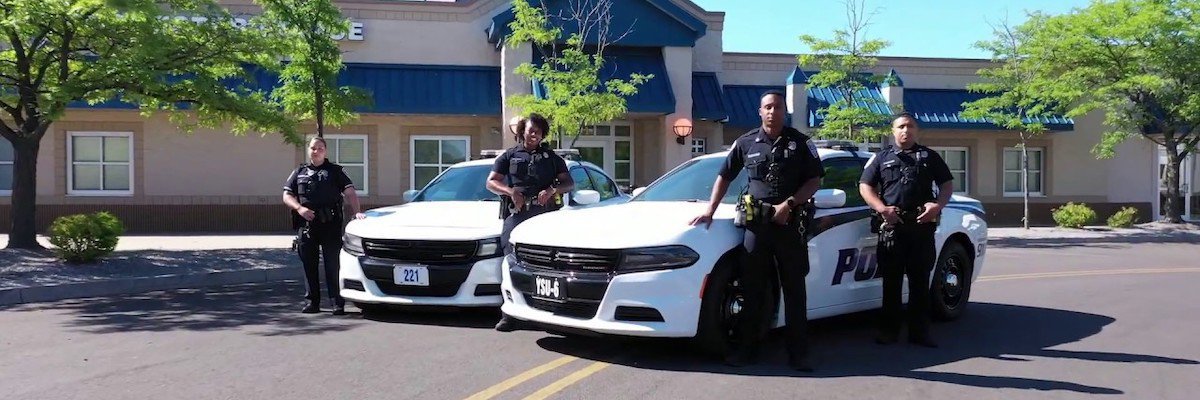New York City expects to deploy more than 6,000 new devices in vehicles throughout the city later this year as part of a U.S. Department of Transportation-funded study, a high-tech system that officials hope will make streets safer by using an alert system that warns drivers and pedestrians of trouble ahead.
In all, 8,000 of the newly-acquired Aftermarket Safety Devices, part of the planned Connected Vehicle System, will be distributed in New York to taxis, buses, and delivery trucks to connect vehicles to each other and to the traffic control network. The pilot program, which received $22 million in federal funding, along with similar efforts in Tampa, Florida and Wyoming, is part of a government-sponsored study of the latest high-tech concept for traffic management: linking vehicles and connecting them to the infrastructure which can help control their movement.
“The trend in the industry and what a lot of the leaders of mobility in transportation have adopted is more of the community philosophy of traffic management, looking at the grassroots, trying to improve mobility as opposed to increasing capacity,” said Kevin Balke, senior research engineer at Texas A&M University’s Transportation Institute, told MuckRock. “The transportation system in 10 years is going to look very different.”
Getting to that inflection point, however, is not likely to happen quickly, and raises questions about protecting privacy that have yet to be broadly addressed.
Recent efforts have shown that even high-tech solutions meant to decrease congestion and increase travel speeds and efficiency require significant planning and funding. Los Angeles, California announced in February 2013 that it had become the first major city in the world to synchronize all of its traffic lights, a move to connect all of the city’s more than 4,500 intersections to a remote control center. The news came with a promise to reduce travel times by about 12 percent on notoriously clogged roads - often ranked as the worst in the nation. Eric Garcetti, a Los Angeles City Council member who shortly afterward became mayor, tweeted that syncing the traffic signals would reduce “nearly 1 metric ton of pollution annually and saves you 1 day of waiting in traffic.”
Synching ALL of the LA's traffic signals reduces nearly 1 metric ton of pollution annually and saves you 1 day of waiting in traffic.
— Mayor Eric Garcetti (@MayorOfLA) February 19, 2013
But the Automated Traffic Surveillance and Control (ATSAC) System, developed internally by Los Angeles’s Department of Transportation, did not provide a quick fix to the city’s traffic problems. Getting the system completely running took nearly two decades. Originally tested during the 1984 Los Angeles Olympics, part of a host of changes to the area’s roads, the system was meant to enable remote control of about 120 traffic lights in case of an emergency, or if law enforcement, or other vehicles needed to cut through traffic.. The project cost an estimated $400 million, including installing in-road sensors to measure the flow of traffic and hundreds of cameras at intersections.
But the hope for tech answers to the vexing problems faced by local governments, while particularly strong when it comes to traffic and public transit, also carries risks. As many governments, companies, and transportation specialists develop and use “intelligent transportation systems,” with growing reliance on wireless communication and surveillance, they also are stepping into an area that some privacy advocates find problematic. Will the fixes involve unnecessary intrusion into private actions, or provide the government with a trove of data it isn’t entitled to?
One of the most widely used higher tech approaches to roadways in the last few decades has been the widespread adoption of the E-Z Pass system. Repeatedly, the American Civil Liberties Union has raised privacy issues as a reason that governments should hesitate to use electronic tolling and license plate readers. E-ZPass, initially conceived of as a way to address the effect of the stop-and-go of cash tolls on traffic in the New York-New Jersey area, is now used in 17 states in the eastern United States and has inspired similar systems across the country.
It also has introduced the slow creep of wireless technology surveillance. Transportation managers realized that the digital toll system also allowed the collection of travel data, making it easier to study and improve traffic flow. They soon recognized that bluetooth in cars could give them data to track vehicle speeds and travel patterns even more precisely. This led to the idea that perhaps the cars also should be connected to one another to share information about traffic conditions along a roadway. Along with these changes have also come efforts to use data for law enforcement purposes, like tracking speed and issuing tickets.
Another potential challenge is one that is familiar to modern technology users: the software glitch. New York City, which also has been integrating remotely-controlled traffic signals into its traffic management system, at a cost of about $2,000 per intersection suffered an outage during a software update in February 2018. That caused hundreds of traffic lights to malfunction. The city’s Department of Transportation has said New York hasn’t had any additional problems with the system, which now control more than 13,400 traffic signals from its traffic management center.
These concerns aren’t slowing the transition to high-tech transportation approaches to traffic management. Static approaches, like adding new roads to ease congestion, have proven unreliable, as traffic often grows to meet and exceed increased road capacity, according to numerous studies. The “quick fix” for traffic, it seems, simply doesn’t exist.
“Instead of trying to make a huge change in capacity all at once, such as adding a lane or retiming the signals or something like that, the notion now is to use surveillance or detection systems to identify when traffic patterns are changing and to adjust your traffic management strategy to coincide with the ebbs and flows of traffic demands as it moves about. Traffic is never static,” Balke said.
“Demand for different roadways increases by the time of day, over the years, as communities redevelop and things like that. So we’re always in a constant management mode on the best way to manage that traffic. And that’s where the intelligence comes into play. We need these systems to identify where these trends are happening in the roadways and try to be more proactive in making these fine-tuning adjustments to keep the roadways from breaking down with congestion.”

Algorithmic Control by MuckRock Foundation is licensed under a Creative Commons Attribution 4.0 International License.
Based on a work at https://www.muckrock.com/project/algorithmic-control-automated-decisionmaking-in-americas-cities-84/
Image via PXHere




